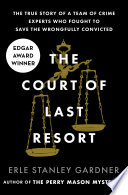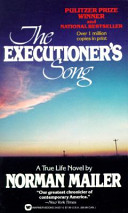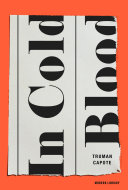Are you looking for the best true crime books of all time? Take a look at our guide to see the best novels to add to your reading list.
Many people can’t get enough of suspense and thriller stories, so you might be interested in the best true crime books for the ultimate adrenaline rush. These books follow true stories, or at least based on true stories, and provide readers with an inside look at how a crime unfolds and how it looks to different people.
If you enjoy mystery and suspense, consider exploring best detective novel series, authors like Harlan Coben, authors like Agatha Christie.
For more recommendations, you might also enjoy exploring authors like Harlan Coben, authors like Gillian Flynn, best detective novel series.
Table of Contents
Open Table of Contents
- Must-Read True Crime Books
- 1. The Executioner’s Song, by Norman Mailer
- 4. Midnight in the Garden of Good and Evil, by John Berendt
- 5. The Stranger Beside Me, by Ann Rule
- 6. Helter Skelter, by Vincent Bugliosi
- 9. The Journalist and the Murderer, by Janet Malcolm
- 10. Shot in the Heart, by Mikal Gilmore
- 11. Under the Banner of Heaven, by Jon Krakauer
- 13. The Innocent Man, by John Grisham
- 16. The Poisoner’s Handbook, by Deborah Blum, 2011
- 18. People Who Eat Darkness, by Richard Lloyd Parry, 2010
- 19. The Brothers, by Masha Gessen
- 21. Who Killed These Girls, by Beverly Lowry
- 25. Suspicions of Mr. Whicher by Kate Summerscale
- 26. Furious Hours: Murder, Fraud, and the Last Trial of Harper Lee by Casey Cep
- 27. Say Nothing: The True Story of Murder and Memory in Northern Irelandby Patrick Radden Keefe
- 30. We Keep the Dead Close: A Murder at Harvard and a Half Century of Silenceby Becky Cooper
- 31. The Court of Last Resort by Erle Stanley Gardner
Must-Read True Crime Books
1. The Executioner’s Song, by Norman Mailer
Truman Capote is one of the top true crime authors of all time. In many ways, In Cold Blood launched the genre many people know and love today. This is a story that focuses on a quadruple homicide that takes place in Kansas, absolutely rattling the town to its core. Even though the case is relatively straightforward and quickly closed, the psychology behind it is worth exploring. Based on interviews with killers, research on the victims, and an exploration of how the case unfolded, this book is an excellent way for people to learn more about a unique genre.
“Once a thing is set to happen, all you can do is hope it won’t. Or will-depending. As long as you live, there’s always something waiting, and even if it’s bad, and you know it’s bad, what can you do? You can’t stop living.”
Truman Capote, In Cold Blood
4. Midnight in the Garden of Good and Evil, by John Berendt
Midnight in the Garden of Good and Evil, by John Berendt, is often listed as one of the best true crime books of all time. This book is known for its vivid imagery, holistic style, and ability to address the historical backdrop against which the crime is committed. The murder focuses on a male escort who is killed by a local merchant and goes through four trials. But, on the other hand, it is the residents, and their reaction to the crime, that ultimately make this story so interesting. What was it like to work as a male escort in the Deep South during the 1980s?
“By morning she was dead. She had not died of starvation or committed suicide by any conventional means. She had simply willed herself to die, and being a strong-willed woman, she had succeeded. She had missed dying on her birthday by two days.”
John Berendt, Midnight in the Garden of Good and Evil
5. The Stranger Beside Me, by Ann Rule
There are a lot of famous serial killers throughout the history of the United States, and one of the top examples is Ted Bundy. Ann Rule, one of Bundy’s closest friends, wrote this book, The Stranger Beside Me. She seeks to provide a slightly different look at Ted Bundy from the one convicted of murder. She even says she would have trusted Ted Bundy to care for her children before they lost touch in 1974. Even though she did not want to admit that Ted Bundy could have been involved in the crime spree, this book shows what it is like to know someone convicted of such heinous crimes.
“The only clue I had was that my dog (who liked everyone) didn’t like Ted at all. Whenever he bent over my desk at the Crisis Clinic, she growled and the hackles on her neck stood up. The lesson is clear: Pay attention to your dog!”
Ann Rule, The Stranger Beside Me
6. Helter Skelter, by Vincent Bugliosi
Some people love reading books about true crime but would instead go without the details of gruesome murders. The Orchid Thief, by Susan Orlean, takes place in South Florida. The author does a tremendous amount of research, pairs it with beautiful narration, and focuses on how orchid poachers are caught. Orchids are beautiful flowers, and they can be challenging to raise. Therefore, it can be disheartening when someone starts killing all the orchids. However, even though this book might not have murders, it is just as compelling as any other.
“I think the real reason is that life has no meaning. I mean, no obvious meaning. You wake up, you go to work, you do stuff. I think everybody’s always looking for something a little unusual that can preoccupy them and help pass the time.”
Susan Orlean, The Orchid Thief
9. The Journalist and the Murderer, by Janet Malcolm
This is a story that takes place in North Carolina. The Journalist and The Murderer focuses on the case that unfolded after a pregnant woman, and her two children were stabbed to death. Given that the husband survived, he quickly became the prime suspect.
He decided to partner with an author who had published an account of his life to pardon himself. That book is not the one included here. Instead, it focuses on how a journalist pretended to believe the husband was innocent before hatching a strategy to prove that the husband was guilty. What are the moral implications of such a decision on both the husband and the journalist?
“The concept of the psychopath is, in fact, an admission of failure to solve the mystery of evil—it is merely a restatement of the mystery—and only offers an escape valve for the frustration felt by psychiatrists, social workers, and police officers, who daily encounter its force.”
Janet Malcolm, The Journalist and the Murderer
10. Shot in the Heart, by Mikal Gilmore
Shot in the Heart tells the story of Mikal Gilmore, who grew up with a murderer in the home. There are lots of people who are interested in the upbringing that contributes to someone becoming a murderer.
Even though there is probably an element of both nature and nurture, Mikal discusses how he escaped the same fate as his brother. He describes the abuse and alcoholism he and his brother endured at home. While the book is certainly not easy, it is an excellent way for people to get a more nuanced look at how the most vicious criminals are made.
“Children begin by loving their parents; as they grow older, they judge them; sometimes they forgive them.”
Mikal Gilmore, Shot in the Heart
11. Under the Banner of Heaven, by Jon Krakauer
My Dark Places follows the author as he tries to figure out who killed his mother. Even though the case went cold decades ago, the author never stops trying to figure out who killed his mother. He even hired a detective from the County of Los Angeles to help him solve the case. While the book focuses on how the case unfolds, there are details of his childhood as he goes through his memory bank. Even as he tries to figure out who killed his mother, he reflects on how much his mother genuinely meant to him.
“They moved me and scared me. I replayed the tapes and nailed the source of my fear. The women sounded smug. They were entrenched and content in their victimhood.”
James Ellroy, My Dark Places
13. The Innocent Man, by John Grisham
The Devil in the White City focuses on one of the earliest serial killers to be documented in the history of the United States. In 1893, the World Exhibition was in Chicago. At the time, the city was called the White City. The city is in the process of welcoming people from all over the world, and Daniel Burnham is proud of what the city has brought to life until a local pharmacist plans to murder a bunch of people at a local hotel. The authorities must uncover this plot and stop him before killing everyone at the fair.
“Beneath the stars the lake lay dark and sombre,” Stead wrote, “but on its shores gleamed and glowed in golden radiance the ivory city, beautiful as a poet’s dream, silent as a city of the dead.”
Erik Larson, The Devil in the White City
16. The Poisoner’s Handbook, by Deborah Blum, 2011
Devil in the Grove focuses on a controversial court case in 1949. At the time, four young African-American men were accused of sexual assault. Unfortunately, one of them was killed, and the other three individuals were violently beaten by local law enforcement. Then, Thurgood Marshall, the famed attorney from Brown vs. Board of Education, takes the case to defend that. This is a case that turned into a massive civil rights moment, launched his career, and created one of the best true crime stories that people have ever heard of.
“There is very little truth in the old refrain that one cannot legislate equality. Laws not only provide concrete benefits, they can even change the hearts of men—some men, anyhow—for good or evil.”
Gilbert King, Devil in the Grove
18. People Who Eat Darkness, by Richard Lloyd Parry, 2010
People Who Heart Darkness took place in 2000. The story focuses on a 21-year-old who moves from England to Tokyo. There, she starts working as a hostess at a local restaurant. Then, all of a sudden, she disappears. The British press became focused on the story, and the Japanese police were busy figuring out what happened. Now, the story is an international phenomenon, as everyone is curious about what happened to her. The story focuses on the sexual culture of Japan, which captivated the young hostess, and how a young white woman can paralyze the media.
“Even those we know best are strangers, whom we understand, if we ever do, intermittently.”
Richard Lloyd Parry, People Who Eat Darkness
19. The Brothers, by Masha Gessen
What would you do in this situation? This story focuses on what happened immediately after Hurricane Katrina, one of the costliest hurricanes in the history of the United States. Five Days at the Memorial shines a light on a local medical center that is operating under a tremendous amount of stress.
Suddenly, medical professionals and administrators decided to de-prioritize critically ill patients who had signed a DNR, meaning they should not be resuscitated if they died. Steps might have even been taken to hasten their deaths. Medical professionals had to make a difficult choice, and what would you do in this situation? This is an educational story that everyone can learn from.
“We do not wish to capitalize the sufferings of human beings, but to relieve them.”
Sheri Fink, Five Days at Memorial: Life and Death in a Storm-Ravaged Hospital
21. Who Killed These Girls, by Beverly Lowry
Killers of the Flower Moon: The Osage Murders and the Birth of the FBI takes readers back to the 1920s when the two wealthiest people in the world were a part of the Osage Indian tribe in Oklahoma. Following their discovery of oil under their land, they began to live a lavish lifestyle filled with mansions, butlers, and private schools for their children. Soon, members of the Osage tribe began to die under mysterious circumstances. More than 24 Osage tribe members were murdered before the FBI stepped in, and with an undercover team, they began to unravel the mystery of the Osage murders.
“History is a merciless judge. It lays bare our tragic blunders and foolish missteps and exposes our most intimate secrets, wielding the power of hindsight like an arrogant detective who seems to know the end of the mystery from the outset.”
David Grann, Killers of the Flower Moon: Oil, Money, Murder and the Birth of the FBI
25. Suspicions of Mr. Whicher by Kate Summerscale
Suspicions of Mr. Whicher focuses on a crime that occurred in England in 1860— a three-year-old child was found dead at the bottom of an outdoor pit. Citizens of England became obsessed with solving crime. The best inspector in the United Kingdom—Jonathan Whicher—was sent to investigate. Whicher was unable to solve the case due to circumstantial evidence. Still, his character is seen in much literature today, including Wilkie Collins’ Sergeant Cuff and Dashiell Hammett’s Sam Spade.
“‘The detective story,’ observed Raymond Chandler in 1949, ‘is a tragedy with a happy ending.’ A storybook detective starts by confronting us with a murder and ends by absolving us of it. He clears us of guilt. He relieves us of uncertainty. He removes us from the presence of death.”
Kate Summerscale, The Suspicions of Mr. Whicher
26. Furious Hours: Murder, Fraud, and the Last Trial of Harper Lee by Casey Cep
Named one of Time magazine’s best books of 2019, Furious Hours combines a biography of Harper Lee with a true-crime novel. The book tells the story of how Harper Lee traveled to New York City with an interest in writing her version of In Cold Blood (as she helped Truman Capote write the renowned novel). Lee sat in the audience while Reverend Willie Maxwell was tried for murdering his family for insurance money, and he was found innocent—yet was shot dead at the funeral of his final victim.
“Like a lot of small town bookworms, she was too well-read to be a true country bumpkin, but too country to be anything but mesmerized by Manhattan. She had enough books to read, and movies to see, and museums to visit to last her several lifetimes. The city overwhelmed and delighted her.”
Casey Cep, Furious Hours: Murder, Fraud, and the Last Trial of Harper Lee
27. Say Nothing: The True Story of Murder and Memory in Northern Irelandby Patrick Radden Keefe
Weinman details the story of Edgar Smith, a murderer who was convicted in the 1960s, in Scoundrel: How a Convicted Murderer Persuaded the Women Who Loved Him, the Conservative Establishment, and the Courts to Set Him Free. While awaiting his death sentence, Smith received sudden support from William F. Buckley, the founder of National Review. Buckley believed Smith couldn’t commit such a crime, and fought for his release from prison. Shockingly, Buckley’s efforts proved worthwhile, and Smith was released from prison… only to attempt to kill again.
Weinman explores how the establishments of the time worked to allow Smith to avoid punishment despite clear evidence of his crime. Looking for more? Check out our round-up of the best books by Barbara Cartland!
“The tragedy of early, violent death is that it strips away the person and leaves only the act, the making of the dead girl, rather than the celebration of the lived life. The killer has the power. The one who dies loses it all.”
Sarah Weinman, Scoundrel: How a Convicted Murderer Persuaded the Women Who Loved Him, the Conservative Establishment, and the Courts to Set Him Free
30. We Keep the Dead Close: A Murder at Harvard and a Half Century of Silenceby Becky Cooper
In We Keep the Dead Close: A Murder at Harvard and a Half Century of Silence, author Becky Cooper discusses the death of Jane Britton, a Harvard graduate student who was brutally murdered. This bestseller was a finalist for the ALCS Gold Dagger Prize and the J. Anthony Lukas Book Prize.
Cooper transports readers back to 1969 when Britton was found beaten to death in her own home. Cooper began to unravel the mystery four decades later and discovered that gender equality at Harvard was likely the cause of the horrific attack (not the rumored story that Britton was having an affair with a faculty member). If you liked this post, check out our round-up of best detective novels series. You can also search for crime/thrillers authors using our search bar at the top right of the post.
“Assigning guilt to the victim helped distance us from what happened to her; it wouldn’t happen to us, as long as we stayed in check. But in so doing, we had unconsciously been perpetuating a story whose moral derived from the very patriarchal system we thought we were surmounting by telling the story in the first place.”
Becky Cooper, We Keep the Dead Close: A Murder at Harvard and a Half Century of Silence
31. The Court of Last Resort by Erle Stanley Gardner
Best known for creating Perry Mason, Erle Stanley Gardner channeled his passion for criminal justice reform into The Court of Last Resort, a groundbreaking work that exposed the flaws in America’s legal system through real-life cases of wrongful conviction. Published in 1952, this non-fiction masterpiece emerged from Gardner’s work with an actual organization of the same name—a group of experts including criminologists, polygraph specialists, and investigators who volunteered to examine cases where innocent people might have been wrongly imprisoned.
Gardner’s approach was revolutionary for its time: rather than simply writing about injustice, he actively worked to correct it. The book chronicles the Court of Last Resort’s investigations into dozens of cases, revealing how circumstantial evidence, rushed investigations, and systemic biases led to tragic miscarriages of justice. Through meticulous detective work that would make Perry Mason proud, Gardner and his team uncovered new evidence, exposed corrupt practices, and helped free numerous innocent prisoners.
What makes The Court of Last Resort particularly compelling is Gardner’s ability to combine the narrative drive of his fiction with the urgency of real-world advocacy. Each case reads like a detective story, complete with false leads, breakthrough discoveries, and dramatic revelations. Yet behind the engaging storytelling lies a serious indictment of a justice system that too often failed those it was meant to protect.
The book’s impact extended far beyond its pages. Gardner’s work helped establish the template for modern innocence projects and investigative journalism focused on wrongful convictions. His insistence on scientific methods, thorough investigation, and the presumption of innocence influenced legal reform movements and inspired generations of lawyers, journalists, and activists committed to criminal justice reform.





